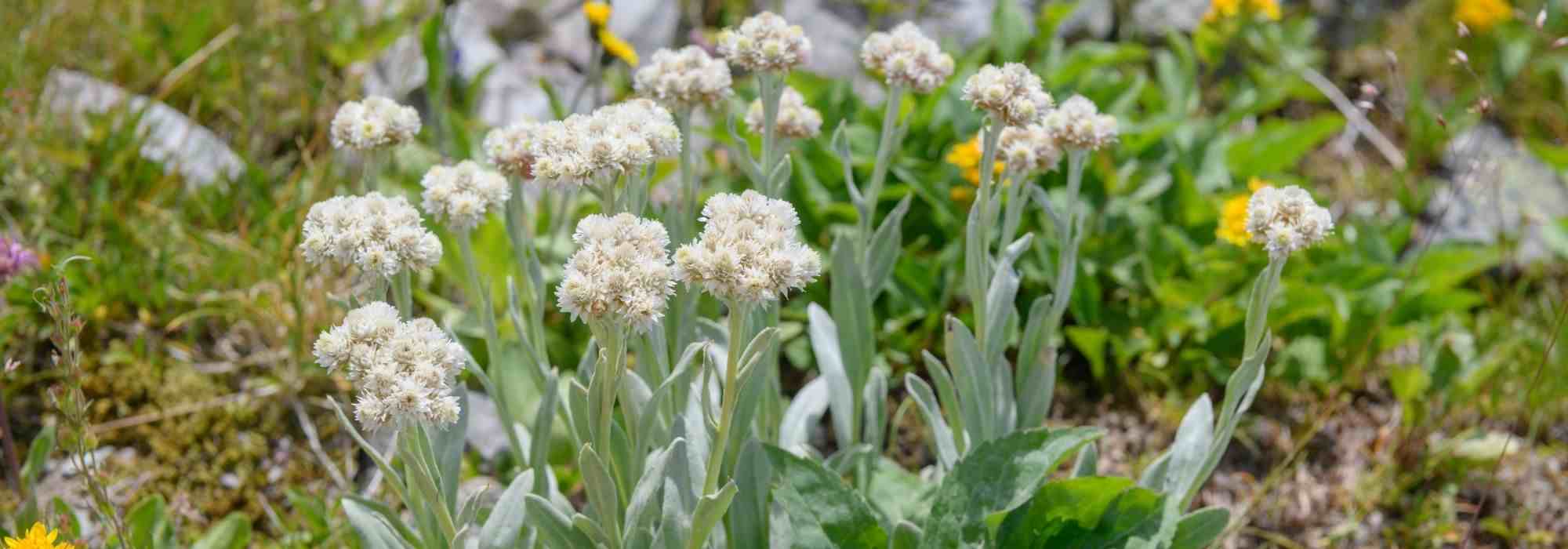
Anaphalis: 5 companion planting ideas
How to combine Silver Immortelle in the garden?
Contents
Called Himalayan Everlasting, Silver Everlasting, or Alpine Buttercup depending on the species, the Anaphalis is a very easy-to-cultivate perennial appreciated for both its grey, downy foliage and its unique flowering. With bracts resembling pearly paper, the inflorescences brighten up the summer and remain decorative until autumn. A plant for neutral or calcareous soil, it thrives in any well-drained dry to moist soil and enjoys sunny but not scorching exposures. Its natural look allows it to be integrated into many displays, both in the garden and inside the home. Here are some suggestions for choosing suitable companions based on the uses you wish to make of it and the space where you want it to develop. Versatile, it can indeed flower in a rockery, enhance a naturalistic garden, provide material for composing fresh or dried bouquets, or contribute to enriching biodiversity by attracting pollinators.
A flowering rockery
Rock gardens have the advantage of being well-drained while retaining a certain freshness. The Anaphalis is a perennial that thrives in these growing conditions. The shorter species (Anaphalis alpicola, for example) are perfect for the foreground, while taller ones, like Anaphalis margaritacea, can be placed in the middle or even the back, depending on the size of your bed. Pair them with neighbours suited to the same environment, such as Phlomis tuberosa ‘Amazone’, which is very architectural with its spikes of mauve flowers arranged in whorls, the Aster sibiricuss in purple hues, or the Gentian asclepiade, a perennial with beautiful trumpet-shaped flowers in deep blue. Some perennials are particularly suited for creating lovely flowering cushions. This is the case for the Mountain Saxifrage ‘Southside Seedling’, Aubrietas, or Silene acaulis, whose fine foliage resembles moss. Let the spiky, sculptural flowers of Eryngium alpinum ‘Blue Star’ emerge, with its steel-blue tones enhancing its presence. The softness of grasses adds movement and grace to the display. Among them, one can mention Marram Grass (or Sand Reed), whose natural appearance pairs beautifully with that of the Anaphalis. A Carex comans ‘Milk Chocolate’ with bronze tones or the blue foliage of a Festuca glauca adds permanent splashes of colour. Finally, early-flowering bulbs allow your rock garden to awaken cheerfully early in the season.
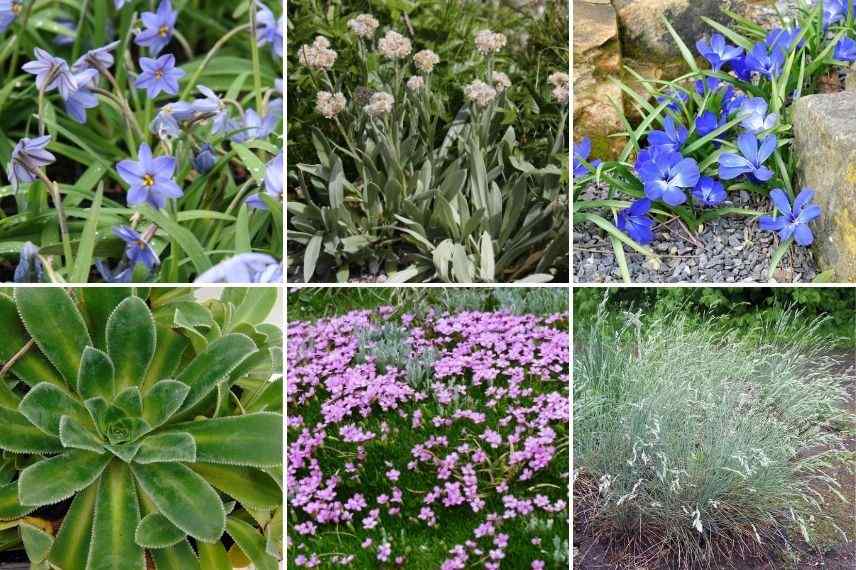
Ipheion ‘Jessie’, Anaphalis alpicola, Tecophilaea cyanocrocus, Saxifraga ‘Southside Seedling’, Silene acaulis (photo Pixabay) and Festuca glauca
A naturalist garden
Naturalistic gardens are all the rage. With a relaxed appearance and sometimes deceptively wild, they integrate into a movement of returning to Nature and simplicity. The Anaphalis fits perfectly into this no-fuss spirit and remains decorative for a long time, even after its inflorescences have dried. To accompany it, choose other plants with a natural look, such as certain verbenas: Verbena bonariensis and Verbena hastata both offer a long purple flowering, with light pom-poms for the former and graceful candelabras for the latter. Other perennials with long flowering, Scabious develop inflorescences in heads with purple or red hues. Echinaceas bloom somewhat like daisies, but they come in single or fluffier flowers, with petals that are sometimes strongly curled downwards like skirts, all in a wide range of colours and shades, from pink to purple, including white, yellow, orange, and even green. To echo the foliage of the Anaphalis, integrate some Verbascum, whose leaves are also sometimes very downy and silver-grey. The tallest (up to 1.8m) create beautiful punctuations that seem to spring from the beds. The flowers in long spikes come in white, yellow, purple, or apricot. Another giant perennial, the Eupatorium produces corymbs of light and airy flowers, white or in various shades of pink. And for a change, try the Eupatorium ‘Chocolate’, with very dark foliage! It’s impossible to conceive of a naturally styled garden without mentioning grasses and their spikes dancing in the wind. Calamagrostis, Panicum, Miscanthus, or even Pennisetum offer a wide range of silhouettes, habits, and colours, and some maintain a beautiful presence in winter when frost takes hold of them.
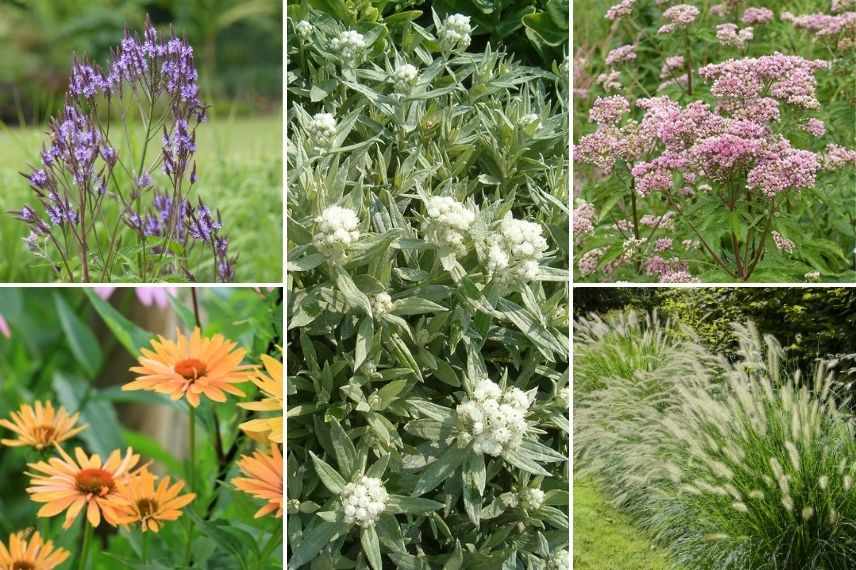
Verbena hastata, Anaphalis triplinervis ‘Sommerschnee’ (photo Wikipedia), Eupatorium ‘Plenum’, Echinacea ‘Big Kahuna’ and Pennisetum ‘Hameln’
Discover other Anaphalis
View all →Available in 1 sizes
Available in 1 sizes
Available in 1 sizes
Available in 1 sizes
A cutting flower bed for summer
The Anaphalis is highly valued in the composition of bouquets, and to brighten up the interior of the house in the height of summer, it requires companions to join it in the vase. By cultivating the following plants, you will have all the materials needed to bring a bit of the garden into your living room. The inflorescences of the Immortal add a lot of lightness to a floral arrangement. They can be paired with the lightly scented roses of the old rose ‘Joseph’s Coat’, whose semi-double, clustered flowers offer various colours, from yellow to purplish pink depending on their ripeness. To enhance the airy and graceful effect of the bouquet, add a few stems of Gypsophila ‘Flamingo’ with its tiny pale pink double flowers. The lemon yellow flowers of the Leucanthemum ‘Sonnenschein’ echo the hues of the Immortal’s flower centres. If you wish to reflect the shades of the rose, the Echinacea ‘Pacific Summer’ offers a delicate pastel orange. Don’t forget to add a vertical note, for example with the mauve spikes of a perennial Snapdragon like Antirrhinum ‘Pretty Pink’. Finally, feel free to add a few stems of Cosmos, Marigolds, or Sunflowers, three easy-to-grow annuals with generous flowering.
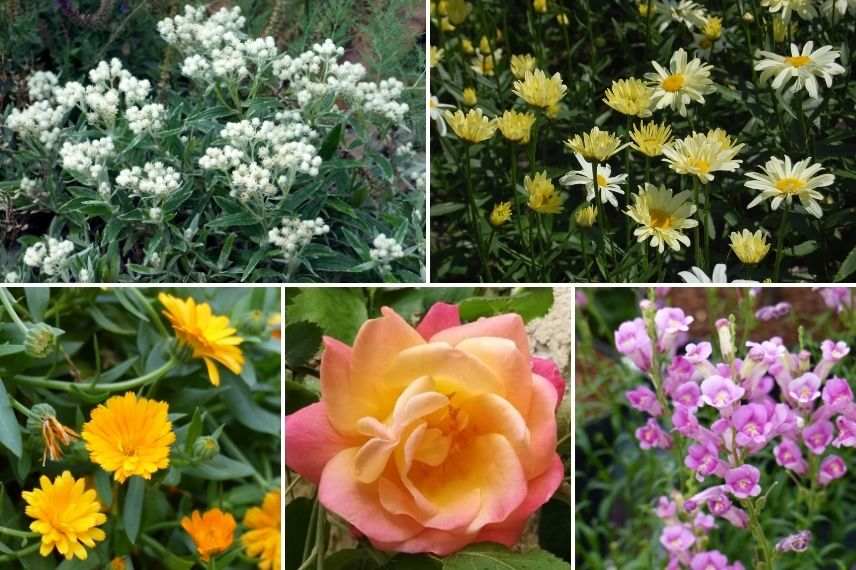
Anaphalis triplinervis, Leucanthemum ‘Sonnenschein’ (photo Sharon K.), Calendula, ‘Joseph’s Coat’ rose, and ‘Pretty Pink’ Antirrhinum
A range for dried flower arrangements
One of the advantages of the White Everlasting is its ability to remain beautiful even after its flowers have dried. Its paper-like bracts with pearlescent reflections can be combined with other plants to create dried bouquets that remain decorative for a long time. As with fresh bouquets, consider establishing a palette of suitable plants in the garden that reveal another beauty once their flowers have dried. This is the case, for example, with Honesty, an easy plant whose white or purple flowers give rise to siliquae, flat, translucent, silver discs. Light and airy, Sea Lavenders can complement your display, just like Love-in-a-Mist, an annual that is very easy to sow, and whose dried inflorescences are true pieces of craftsmanship. Don’t hesitate to play with the unique graphic forms of decorative Thistles, which undoubtedly add a bit of spice to your bouquets. A few Physalis, with edible fruits encased in a lace-like calyx, add a touch of exoticism. Finally, the spikes of grasses offer a variety of shapes, infusing a lot of dynamism into your bouquets. The choice is vast, but one can mention the Quaking Grass, which has both a perennial and an annual version.
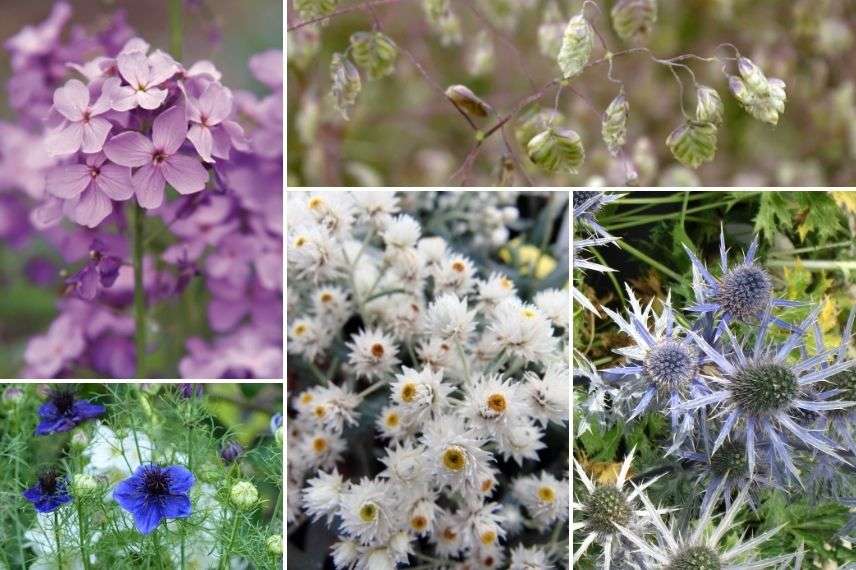
Lunaria annua (photo Alexandre Dulaunoy), Briza media, Nigella, Anaphalis ‘Yedoensis’, Eryngium ‘Big Blue’
A paradise for pollinators
When it is possible to have both a beautiful garden and a garden that is beneficial to insects, why deprive yourself? Select melliferous plants that, like Anaphalis, allow you to admire the spectacle of all these helpers at work between summer and early autumn. Moreover, you contribute to the richness of biodiversity in your garden. Among the bushes, Vitex (or Chaste Trees) can serve as a backdrop. Depending on the space you have, choose a small-growing species, such as Vitex ‘Blue Puffball’ (1.1m), or a giant like Vitex ‘Albus’ (4m). Vitex offers a very generous flowering in blue or white clusters depending on the varieties. Smaller but equally decorative, Lavenders guarantee you a superb fragrant flowering, with the added bonus of evergreen foliage, which ensures decoration in winter. Among the perennials and biennials, Buenos Aires Verbenas, with their tall naked stems topped with delicate purple inflorescences, provide a spectacle for many months, and pollinators love them. Available in white or various shades of pink, Valerians are just as beautiful and undemanding. Beneficial to insects, Oregano is a groundcover that delights both gardeners and cooks. Its aromatic foliage even comes in a variety with golden hues, such as Origanum ‘Aureum’. Melliferous, Cirsium japonicum ‘Rose Beauty’ is also unique, thanks to its flowering in hairy pom-poms of magenta pink.
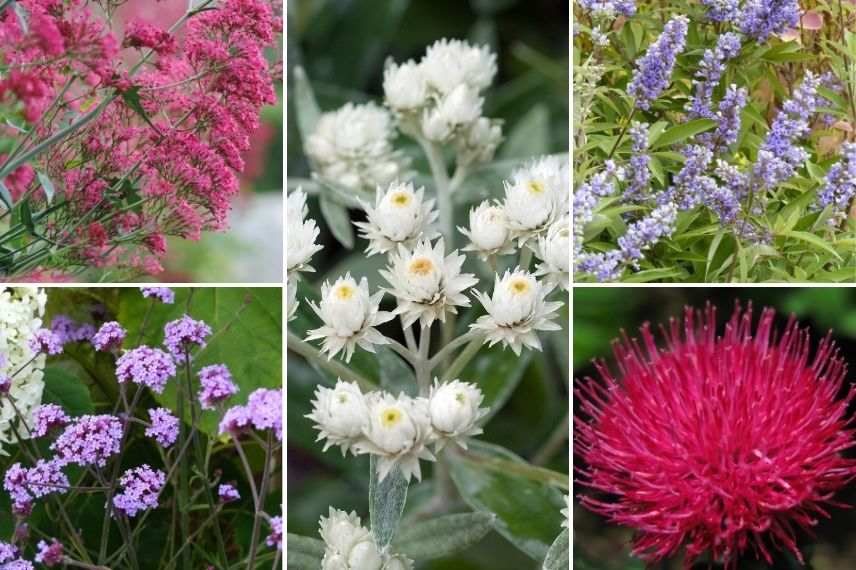
Centranthus ruber (photo snapp3r), Anaphalis triplinervis, Vitex agnus castus ‘Latifolia’, Verbena bonariensis ‘Lollipop’, and Cirsium ‘Rose Beauty’ (photo tanaka)
- Subscribe!
- Contents
![[anaphalis_associate title="Associate"]](https://www.promessedefleurs.ie/blogwp/wp-content/uploads/2021/09/Anaphalis-Associer.jpg)































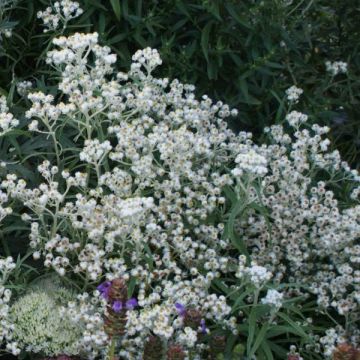
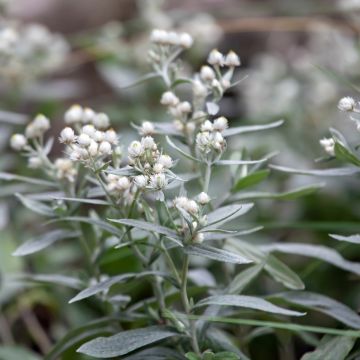
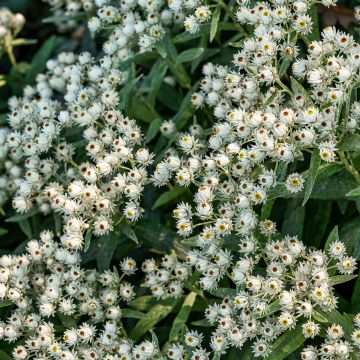
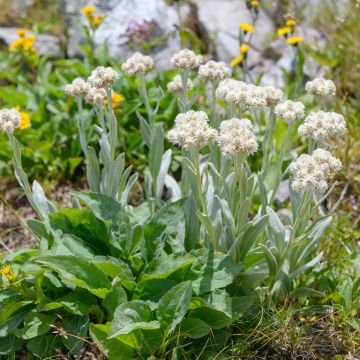
Comments